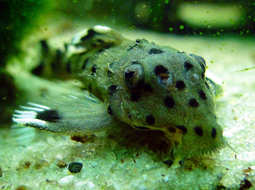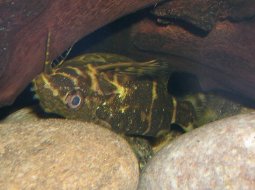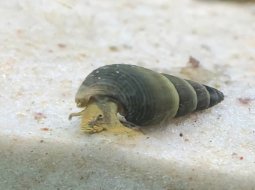
Loading Aqualapp ...
Care and Compatibility of Pez Cachama - Piaractus brachypomus
Introduction
The Caribe Pacu (Piaractus brachypomus) is a large-sized fish found in South America. It has a robust, flattened body, with coloration ranging from silvery to golden tones. Its caudal fin is considerably forked. This fish is prized in the aquarium hobby due to its majestic appearance, but enthusiasts should be prepared to provide it with a suitable environment and compatible tank mates due to its territorial and aggressive nature as it grows.
Behavior
The Piaractus brachypomus, also known as the Caribe Pacu, is a freshwater fish native to South America. It is known for its impressive size and omnivorous appetite. However, it is important to mention that this fish can become aggressive and territorial, especially as it grows larger. In community aquariums, care should be taken when selecting tank mates for this fish, as it can display intimidating behaviors towards other fish.
Sexual Dimorphism
Sexual dimorphism in Piaractus brachypomus is minimal and difficult to distinguish. Both sexes have a similar appearance.
Reproduction
Breeding Caribe Pacu in captivity is challenging due to its specific requirements and territorial nature. They are believed to be free spawners, and their successful reproduction in aquariums often occurs in large ponds with conditions similar to their natural habitat. Successful breeding of this species often requires specialized facilities and experience in breeding large tropical fish.
Aquarium Conditions
Piaractus brachypomus, commonly known as the red-bellied pacu, requires a large and spacious aquarium with plenty of room to swim. It prefers warm and slightly acidic to neutral water. Aquarium décor should include rocks, driftwood, and hardy plants. Maintaining water quality is crucial and providing a varied diet.
Feeding
Piaractus brachypomus is omnivorous and accepts a variety of foods. In its natural habitat, it feeds on fruits, nuts, and other plant materials, as well as insects and small fish. In captivity, it can be fed a balanced diet including high-quality commercial foods for large fish, as well as fresh fruits and vegetables. Providing a varied diet is important to ensure its health and well-being.
Complexity
Caring for Piaractus brachypomus can be challenging. They are large and active fish that can damage aquarium vegetation and décor. It's recommended to keep them in a large tank with similarly sized and peaceful companions. They are omnivorous and accept a variety of foods, including vegetables and live foods.
In case you need more help, or if you want to know into any topic related to the Piaractus brachypomus (Pez Cachama) and even any other species you can use the forums to ask what you need.
To do an analysis more detailed about coexistence and behavior of Piaractus brachypomus (Pez Cachama) use the Aquarium simulation tool, if you do this you can test different ways to combine the Pez Cachama with other fishes giving the dimensions and space on you aquarium, on this way you can known the optimal configuration for keep the fishes that you want.
You can also find out the 18 species compatible with the Piaractus brachypomus (Pez Cachama) can live together.
Note: The parameters of the water such as PH and temperature are also used to calculate the compatibility of the species.
Compatible species (18)
Compatible (12 Species)
Compatible without any restriction
With Reservation (6 Species)
Las especies territoriales por lo general pueden convivir con especies protegidas con coraza, ya que no pueden hacerles daño por su dura piel, lo que si hay que tener en cuenta es tener un acuario con dimensiones favorables para que cada pez pueda delimitar un territorio, ya que la mayoría de peces acorazados son también peces de fondo y les gusta estar buscando lugares donde ocultarse.
Most people recommend keeping only one Pacu in an aquarium due to its size and territorial nature. Keeping multiple Pacus in the same tank usually leads to conflicts and can cause injuries to the fish. Additionally, due to their size, they require a large aquarium to provide enough space for them to swim and grow comfortably.
Compatible in some cases, it depends on the nature and personality of the fish.
Pez Cachama
Piaractus brachypomus
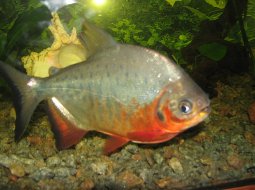
- Ph: 6 - 7.5
- Temperature (c°): 24 - 28
- Measures: 40 cm - 60cm
- Aquarium Capacity:
420 Liters - 111 Gallons - Alimentación: Omnivores
- Colores: Red, Silver
- Comportamiento: Aggressive, Territorial
- Habitad: American
- Preferencias del Acuario: Logs, Rocks
- Tamaño: Very Big
- Taxonomía: Fish
- Tipo de Agua: Sweet water, Tropical waters
- Velocidad de nado o movimiento: Normal
- Zona de Nado: Aquarium background, Swim in the middle of the aquarium

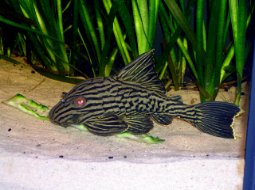

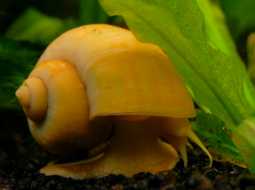
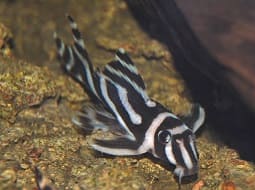
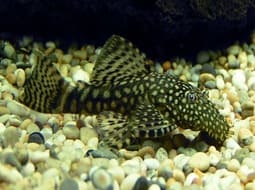



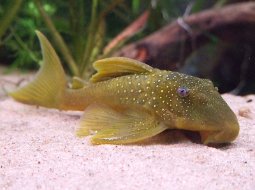
.jpg)
